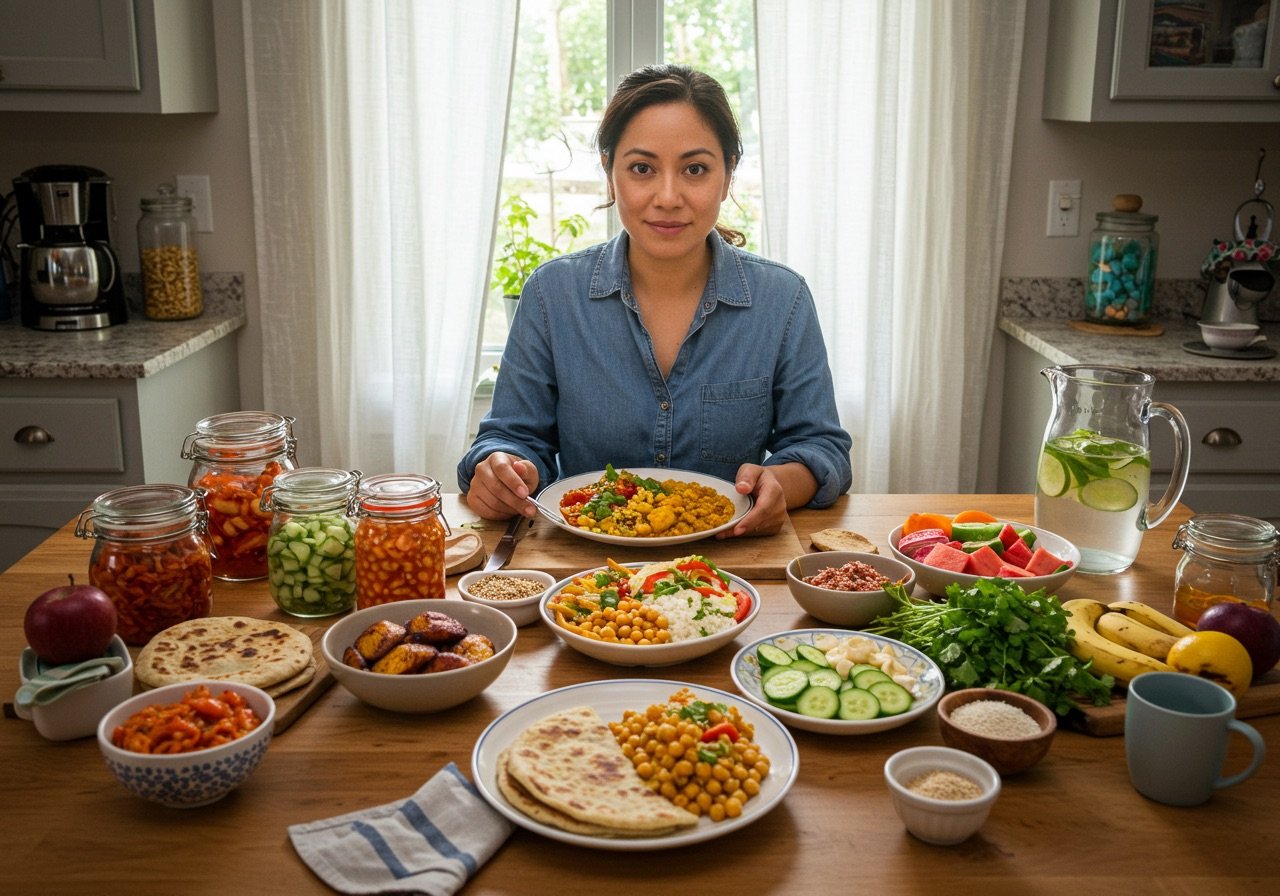🥣 How to Build a Gut-Friendly Plate (Without Giving Up Your Culture or Comfort Foods)
You’ve probably heard all the gut health buzzwords—probiotics, prebiotics, microbiome. But here’s the thing: building a gut-friendly plate doesn’t mean giving up the foods that connect you to your roots. You can support your gut and still enjoy dishes that remind you of home.
🧠 Why Gut Health Matters: It’s More Than Digestion
Your gut is often called your “second brain”—and for good reason. It’s home to over 100 million neurons and connects directly to your central nervous system through the gut-brain axis. This means your gut doesn’t just influence digestion—it impacts your mood, focus, immune system, and even how you handle stress.
Here’s what science tells us:
Around 90% of your body’s serotonin (the feel-good hormone) is produced in the gut.
The gut microbiome—trillions of good bacteria—plays a direct role in mental health.
Studies show that balanced gut bacteria can support emotional well-being, while imbalances are linked to anxiety, fatigue, and brain fog.
A healthy gut means more than fewer bloating days. It can help you feel more calm, clear, and in tune with your body.
🥦 Prebiotics & Probiotics: The Dream Team
Your gut is home to probiotics—good bacteria that keep things running smoothly. To thrive, they need prebiotics—the fibre that feeds them.
Prebiotic-rich foods include:
Garlic, onions, leeks, asparagus, bananas, oats, chicory root, Jerusalem artichoke
Also good to know:
Some things can throw your gut off balance—like overuse of antibiotics, high amounts of processed food, too much alcohol, or excessive NSAIDs (like ibuprofen). Protecting your gut means fuelling it with the right stuff and avoiding what weakens it.
🍽 How to Support Your Gut—Without Losing Your Culture
Gut health shouldn’t feel like a food identity crisis. Here’s how to keep your culture on the plate while giving your microbiome the love it deserves:
✅ Add fermented foods: Think beyond yogurt—curtido, kimchi, kefir, dosa batter, or traditional pickled veggies are great sources of natural probiotics.
✅ Boost fibre: Fibre is your gut bacteria’s favourite fuel. Enjoy beans, lentils, chickpeas, plantains, sweet potatoes, or whole grains like millet or brown rice.
✅ Hydrate (the smart way): Water is key, but water-rich foods like tomatoes, papaya, and oranges (found in many traditional cuisines) also support hydration and digestion.
🌍 Make Your Favorite Meals More Gut-Friendly
You don’t have to stop eating your staples—just tweak them slightly to boost fibre, balance, and probiotic content.
Latinx meals:
Add curtido to pupusas
Try black beans or lentils with brown rice or quinoa
South Asian meals:
Use fermented dosa or idli batter
Add more veggies to curries
Try brown basmati or millet
Middle Eastern meals:
Add fermented pickles to wraps
Use whole wheat pita or bulgur
Include chickpeas in salads and hummus
🧃 Sample 1-Day Gut-Friendly Menu
Breakfast: Dosa with coconut chutney and fresh papaya
Lunch: Lentil curry with brown basmati rice + cucumber raita (yogurt-based)
Snack: Fresh fruit + a handful of almonds
Dinner: Chicken shawarma wrap with whole wheat pita, fermented pickles, and tabbouleh
💬 Final Thought
Gut health isn’t about giving up—it’s about upgrading what you already love. You don’t need a new food identity. You just need better balance and intentional choices.
Let’s build a gut-friendly plan that celebrates your culture and supports your body.
Book a session with me today—and bring your favourite dish with you 😉

